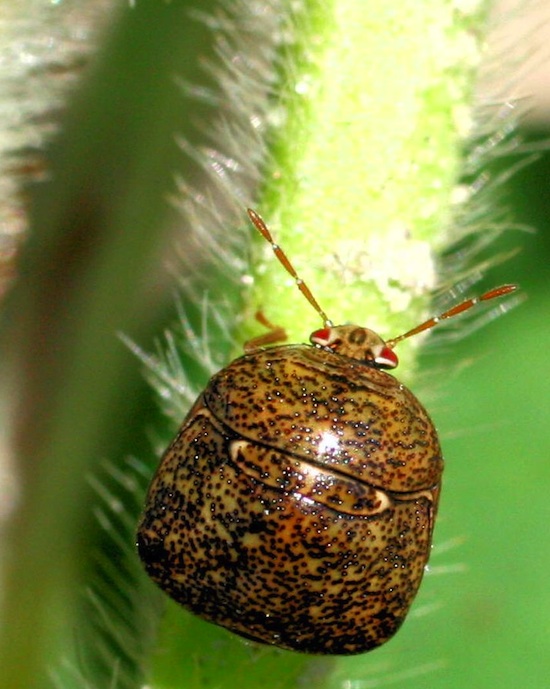A widespread soybean pest the past five years, the kudzu bug population in Georgia is much lower this growing season.
Though still present in soybean fields across the state, kudzu bug populations are nowhere near what they have been in previous years.
Soybean farmers aren't complaining
“This has been a pleasant surprise to most soybean farmers in Georgia,” said Michael Toews, University of Georgia research entomologist on the Tifton Campus.
Kudzu bugs, or “Megacopta cribraria,” have green-to-brown bodies, stippled wing covers and wide back ends. A member of the stink bug family, they can be confused with brown marmorated stink bugs or lady beetles.
Kudzu bugs, in numbers, have a distinct odor often mistaken for a natural gas leak. They also feed on Georgia’s most famous weed, kudzu, and other legumes. They are most active in the spring.
Wayne Gardner, a UGA entomologist and scientist based on the Griffin campus, attributes the drop in kudzu bug numbers this year to the abnormal winter cold snap that swept through the southeastern United States last year.
"If the southeastern part of the United States experiences a winter without abnormally low temperatures like we had last winter, then we will likely see kudzu bug numbers return to relatively high numbers next spring," said Gardner who began his study of the pest when it initially arrived in northeast Georgia in October 2009.
“[The kudzu bug] came from a climate very similar to ours. If you look at it across the latitudes that we are located in, it also exists in those latitudes in Asia,” said Gardner. “The habitats and the latitudes relative to the equator are very similar, but we had an uncharacteristically cold winter.
Higher populations likely in spring
If the southeastern part of the country experiences a normal winter in the upcoming months, higher kudzu bug populations are likely to return next spring, Gardner said.
While temperatures played a role in reducing kudzu bug populations, a tiny wasp helped, too.
Native to Asia, these parasitic wasps are natural predators to kudzu bugs. The wasp lays its egg in kudzu bug’s egg; then, the developing wasp larva destroy the kudzu bug egg as it develops.
The kudzu bug isn’t an economic pest in its native land because the wasps control the populations there, Toews said. The U.S. discovery of these wasps over the last two years led to the hypothesis that the decline in kudzu bugs is due to the wasps’ arrival.
There have been numerous sightings of the wasp over the past couple of weeks. Last year, the wasp was found in the same area as the kudzu bug on initial discovery, Toews said. Now, the wasp has been spotted in Georgia, Alabama and Mississippi. It will take a couple of years for scientists to determine the definitive reason for the decrease in the kudzu bug population.
Munching on kudzu and soybeans
When prevalent and untreated, kudzu bugs can have a devastating impact on soybeans, a crop worth $126.6 million in Georgia. Kudzu bugs are sucking insects that feed on the plant’s sap, which weakens and stresses the plant. The stress can result in yield loss.
“On average, in trials we’ve conducted in previous years, our yield loss averages 19 percent where we’ve failed to treat kudzu bugs,” said Phillip Roberts, a UGA Extension entomologist based in Tifton.
Kudzu bugs have been observed in soybeans this year, but not at the population sizes seen in recent years, said Roberts. In past years, one to two insecticide applications have been needed to control kudzu bugs; but, this year most farmers haven’t had to spray at all.
Less kudzu bugs also means more kudzu.
“Some of the kudzu patches that we normally sample from and look at and watch over the season had a rebound in kudzu growth this year, likely because they didn’t have the quantity of kudzu bugs attacking them,” Gardner said.
For more information on kudzu bugs, visit www.kudzubug.org.








